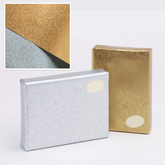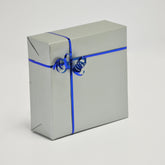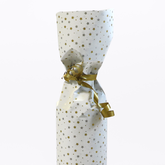4 Disadvantages of Bubblewrap that you may not be aware of

Bubblewrap is an icon of the global packaging industry. Its soft cushioning keeps items safe, it’s normally cheap and easy to re-use, and it’s immensely satisfying to pop. What’s not to love…? Unfortunately, quite a few things. Here are the top 4 to be aware of.
1) Toxicity
For Bubblewrap fans, this is a heartbreaker. Until 2008, Bubblewrap was manufactured using a plastic polymer that is highly toxic to the environment. Unfortunately, many firms still use this cheap, easily available option.
Thankfully, bio-sensitive alternatives are now available. For instance, Kudos has invested in an eco-friendly Hexcel Wrap system, which uses recycled paper to provide sustainable cushioning that safely biodegrades.
2) Clogging up Landfills
In addition to its toxicity, Bubblewrap causes numerous headaches in landfills around the world. Bubblewrap takes up a considerable volume of space and takes hundreds of years to degrade. Landfills require a healthy volume of bacteria and fungi to break down the contents, and sheets of bubble-wrap can create a formidable barrier to this vital process.
Switching to an organic cushioning option enables packaging to be recycled. If it is unfortunate enough to end up in landfill, it can help to speed up the overall break-down.
3) Storage issues
When it comes to storage, Bubblewrap is a practical and ecological nightmare. The majority of Bubblewrap is air, and companies pay astonishing amounts of money to fill packaging shelves with what is effectively empty space. This in turn leads to increased emissions, especially when transport fuel is factored in.
Newer options are flat-packed, lightweight, and tidy to store. For example, Hexcel cushioning comes as a flat sheet that pops out into a comfortable wrap when needed. At Kudos, we’ve found that we’re using around 50% less shelf space for the same quantity of padding!
4) Flammable hazards
The flammable temperature of the Bubblewrap polymer is around 500oC (932o Fahrenheit), which is a very safe level. However, the presence of hundreds of bubbles of mildly pressurised oxygen is a potential recipe for disaster. If a fire does occur, Bubblewrap can act as a terrifying accelerant, throwing bursts of oxygen to fuel the inferno.
Trapped O2 is always a potential hazard, and the Health and Safety Executive (HSE) has extensive guidance on the matter. While bubble-wrap is not as dangerous as oxygen gas cylinders, it is a risk that can be easily avoided with alternative packaging options.
So… What are the alternative packing options to Bubblewrap?
Thankfully, there are plenty of safe, eco-sensitive alternatives to Bubblewrap. We’ve already mentioned the robust yet soft Hexel Wrap solution, which the team at Kudos are so impressed by that we’ve invested in our own machine! However, there are other options out there. Corrugated cardboard, paper crinkles, and packaging noodles made from recycled newspaper are all popular choices.
Next steps.
At Kudos, we are committed to sustainable, non-toxic packaging solutions. To learn more about safe options that really perform, please send us a message.
Image Source: Unsplash






